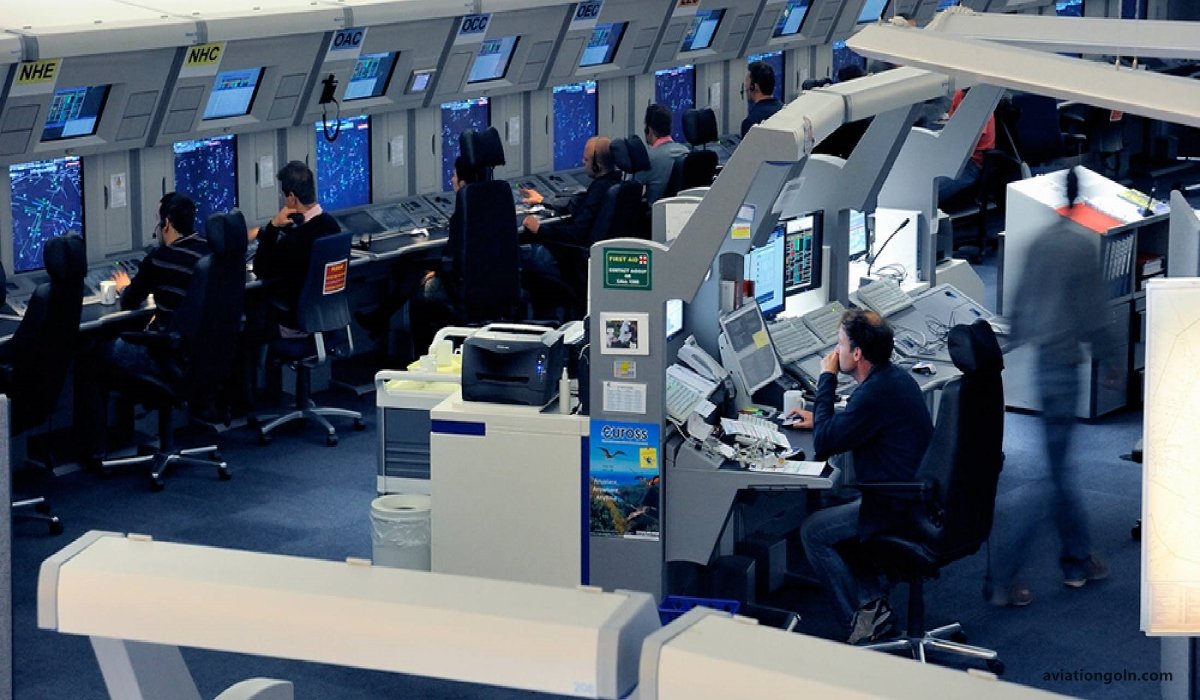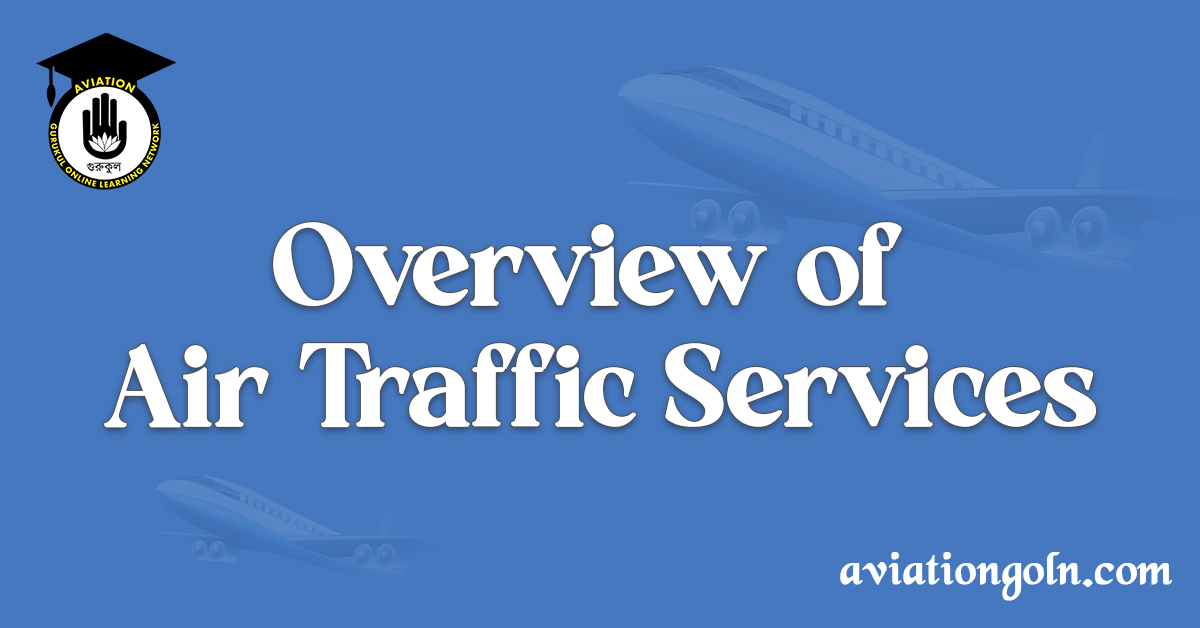Overview of Air Traffic Services: Air traffic services (ATS) play a critical role in ensuring the safe, orderly, and efficient movement of aircraft within global airspace. These complex networks of systems and services have evolved significantly since the early days of aviation, now employing a mix of advanced technology, rigorous regulations, and highly trained professionals to manage air traffic. This article offers a comprehensive overview of air traffic services, including their history, components, importance, challenges, and future directions.
Overview of Air Traffic Services

History of Air Traffic Services
The origin of ATS can be traced back to the early 20th century when aircraft became a common mode of transportation. The first air traffic control (ATC) station was established in Croydon Airport, London, in 1921. However, it was only after the advent of radar technology during World War II that a structured approach to air traffic control began to evolve.
Following a series of mid-air collisions in the United States in the early 1950s, the Federal Aviation Agency (FAA) was established in 1958, introducing a systematic, regulatory approach to air traffic control. Similar agencies were set up around the world, and the International Civil Aviation Organization (ICAO), a UN body, was tasked with setting international standards and regulations for air traffic services.

Components of Air Traffic Services
Air traffic services comprise a variety of services and systems designed to facilitate safe and efficient air travel. These include Air Traffic Control (ATC), Air Traffic Flow Management (ATFM), Aeronautical Information Services (AIS), and Search and Rescue Services (SAR).
Air Traffic Control
ATC is responsible for preventing collisions between aircraft both in the air and on the ground, maintaining an orderly flow of air traffic, and providing information and other support to pilots during flight. This service operates through three main sectors:
- Aerodrome Control Service (TWR): Handles aircraft operations on the ground and in the immediate vicinity of an airport.
- Approach Control Service (APP): Manages aircraft during their climb, descent, and initial approach phases.
- Area Control Service (ACC): Oversees en-route traffic and aircraft at cruising altitudes between the departure and destination airports.

Air Traffic Flow Management
ATFM, a globally coordinated system, balances air traffic demand with system or airspace capacity to ensure the most efficient use of available resources. This service helps reduce congestion, delays, and flight cancellations.
Aeronautical Information Services
AIS ensures the timely delivery of essential data to air traffic services, airline operators, and other relevant entities. This information includes static data (e.g., airport layout, navigational aids) and dynamic data (e.g., weather, NOTAMs (Notice to Airmen), and flight plans).
Search and Rescue Services
The SAR services coordinate the search and rescue of aircraft in distress. They work closely with air traffic services, airline operators, and maritime services to initiate immediate response during emergencies.

Importance of Air Traffic Services
ATS play a vital role in maintaining the safety, efficiency, and regularity of air traffic. They are integral to minimizing potential risks and accidents, as well as ensuring the smooth operation of the global aviation industry.
Safety
ATS provide the required separation between aircraft on the ground and in the air to prevent collisions. Additionally, they offer vital information to pilots about potential hazards such as adverse weather conditions, turbulence, and other aircraft emergencies.
Efficiency
ATS optimize the flow of air traffic, reducing delays and improving the punctuality of flights. This increases the operational efficiency of airlines and enhances passenger satisfaction.
Regularity
By providing a structured system for air traffic, ATS ensure the regularity of air services. They help in maintaining order and discipline in the airspace, which is crucial for routine flight operations.

Challenges in Air Traffic Services
Despite their vital role, air traffic services face several challenges, including capacity constraints, outdated infrastructure, cybersecurity threats, and environmental impact.
Capacity Constraints
As air traffic continues to grow, the capacity of existing air traffic services to manage increased volume is stretched to its limits. This situation can lead to congestion, increased delays, and safety risks.
Outdated Infrastructure
The infrastructure used in many ATS is based on technology that dates back several decades. This outdated infrastructure can limit the capacity, effectiveness, and efficiency of the services.
Cybersecurity Threats
With the increasing reliance on digital systems and automation, ATS are becoming potential targets for cyber-attacks. These threats pose significant risks to the safety and security of air travel.
Environmental Impact
Aviation contributes significantly to global CO2 emissions. There is increasing pressure on ATS to incorporate environmental considerations in their procedures and operations to reduce aviation’s carbon footprint.

The Future of Air Traffic Services
The future of ATS lies in leveraging advancements in technology and data analytics to meet emerging challenges. Two notable developments are NextGen (Next Generation Air Transportation System) in the US and SESAR (Single European Sky ATM Research) in Europe.
NextGen is an umbrella term for the ongoing, wide-ranging transformation of the US’s national airspace system (NAS). This includes initiatives aimed at modernizing ATC, improving information management, and implementing new performance-based navigation procedures.
On the other hand, SESAR aims to redefine the infrastructure for European air traffic management (ATM). Its goal is to make flights more efficient, reduce costs, improve safety, and minimize the environmental impact of aviation.
Both initiatives focus on moving away from ground-based navigation and surveillance to a system that utilizes satellite-based technology. The integration of AI, machine learning, and automation into ATS also promises to enhance safety, efficiency, and environmental sustainability.

Air traffic services are an essential component of the global aviation ecosystem, ensuring the safety and efficiency of air traffic operations. However, the increasing volume of air traffic, coupled with changing technology, presents significant challenges and opportunities. As the industry moves towards more advanced and automated systems, the fundamental objective remains the same: to provide safe, efficient, and orderly air traffic services for the benefit of all airspace users.
